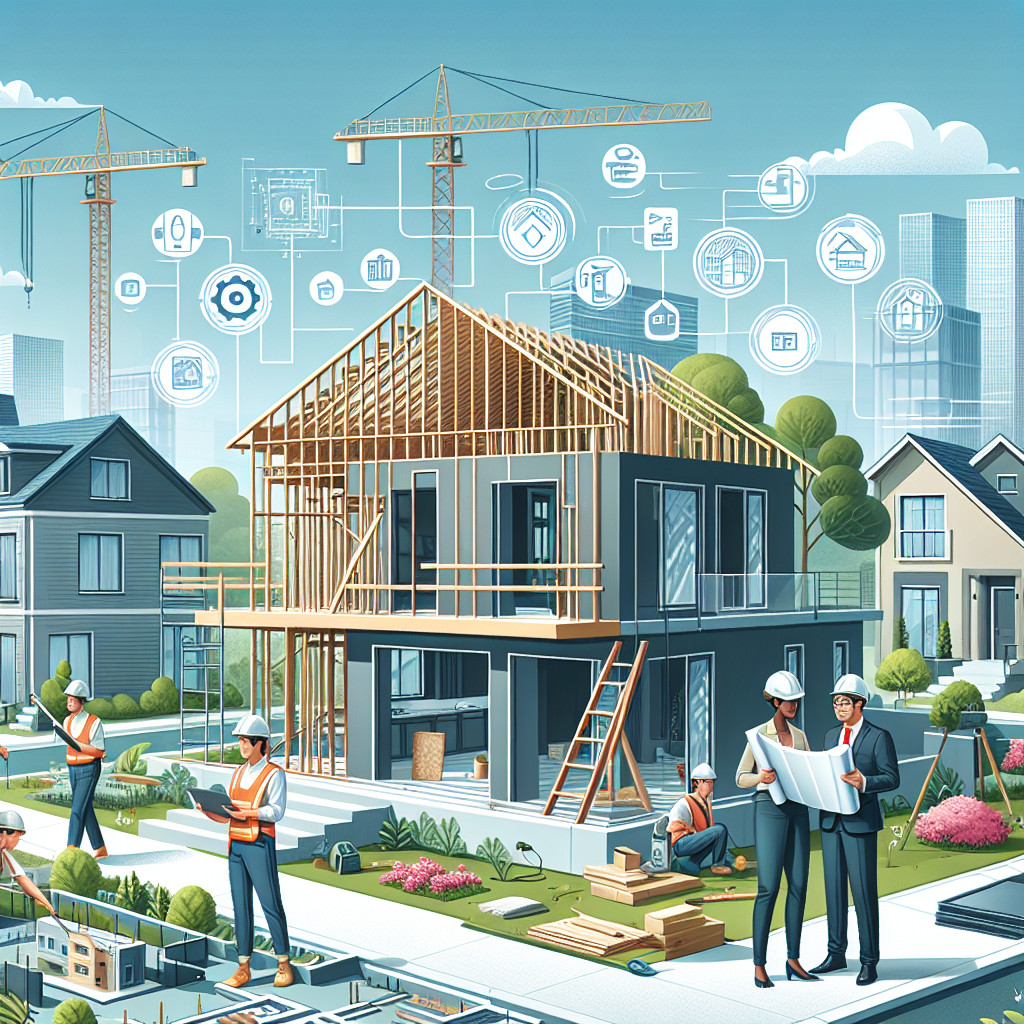The residential construction industry is constantly evolving, and new trends are emerging every year. As a homebuyer, it’s important to stay informed about the latest trends in new residential construction so you can make informed decisions when purchasing a home. In this article, we’ll explore some of the most important trends in new residential construction that homebuyers need to know.
Trend #1: Energy Efficiency
One of the most significant trends in new residential construction is the emphasis on energy efficiency. Homebuilders are increasingly incorporating energy-efficient features into new homes, such as solar panels, energy-efficient appliances, and smart thermostats. These features not only help reduce the environmental impact of the home but also result in lower utility bills for the homeowner.
Smart Home Technology
Another aspect of energy efficiency is the inclusion of smart home technology in new residential construction. Homebuyers are increasingly looking for homes that are equipped with smart thermostats, lighting, and security systems, all of which can be controlled remotely via a smartphone or other devices.
Green Building Materials
In addition to energy-efficient features, new residential construction is also seeing a rise in the use of green building materials. These materials are not only environmentally friendly but also contribute to better indoor air quality and overall health and well-being for the homeowners.
Trend #2: Open Floor Plans
Gone are the days of compartmentalized, closed-off living spaces. Open floor plans have become increasingly popular in new residential construction, with homebuyers favoring a layout that allows for a more seamless flow between different areas of the home. Open floor plans also create a sense of spaciousness and are conducive to modern living and entertaining.
Multifunctional Spaces
Within open floor plans, there is a trend towards creating multifunctional spaces that can serve multiple purposes. For example, a home office might double as a guest bedroom, or a dining area might also function as a home workspace. This trend reflects the changing needs of homeowners who are looking for flexibility and versatility in their living spaces.
Trend #3: Sustainable Design
Sustainable design is an overarching trend in new residential construction, encompassing not only energy efficiency and green building materials but also a focus on sustainable and environmentally conscious design principles. This includes features such as passive solar design, natural ventilation, and the use of recycled or reclaimed materials in construction.
Net-Zero Homes
A subset of sustainable design is the concept of net-zero homes, which are designed to produce as much energy as they consume. These homes typically incorporate a combination of energy-efficient features, renewable energy sources, and advanced insulation and sealing techniques to achieve their net-zero status.
Trend #4: Aging-in-Place Features
As the population ages, there is a growing demand for new residential construction that includes aging-in-place features. These features are designed to make homes more accessible and comfortable for people of all ages and abilities, allowing homeowners to remain in their homes as they age.
Universal Design
Universal design principles are being increasingly incorporated into new residential construction, with features such as wider doorways, no-step entries, and accessible bathrooms becoming more common. These features not only benefit older adults but also provide greater accessibility for people with disabilities.
Trend #5: Outdoor Living Spaces
Outdoor living spaces are another popular trend in new residential construction, with homebuyers showing a preference for homes that offer opportunities for outdoor relaxation and entertainment. This trend includes features such as outdoor kitchens, fire pits, and covered patios or decks.
Integration with Nature
In addition to standalone outdoor living spaces, there is a trend towards integrating indoor and outdoor living areas, blurring the boundaries between the two. This might include large sliding doors that open up the indoor living space to the outdoors, or the use of natural materials and landscaping to create a seamless transition between the two.
Frequently Asked Questions
1. What are the benefits of energy-efficient homes?
Energy-efficient homes offer lower utility bills, reduced environmental impact, and a more comfortable living environment. They also tend to have higher resale value.
2. What is a net-zero home?
A net-zero home is a home that produces as much energy as it consumes, typically through a combination of energy-efficient features and renewable energy sources.
3. What is universal design?
Universal design is the concept of designing spaces and products to be accessible and usable by people of all ages and abilities, without the need for adaptation or specialized design.
4. Why are open floor plans popular?
Open floor plans are popular because they create a sense of spaciousness, allow for better flow and connectivity between living spaces, and are conducive to modern living and entertaining.
5. What are the key features of sustainable design?
Sustainable design includes features such as energy efficiency, green building materials, passive solar design, and the use of recycled or reclaimed materials in construction.

